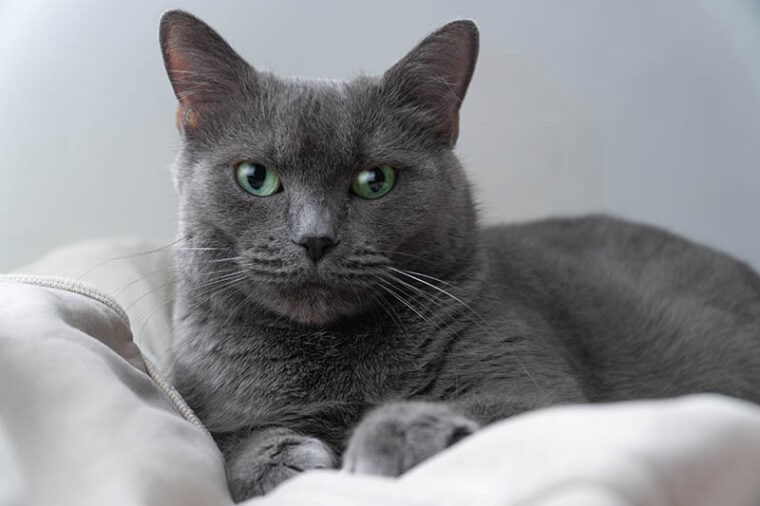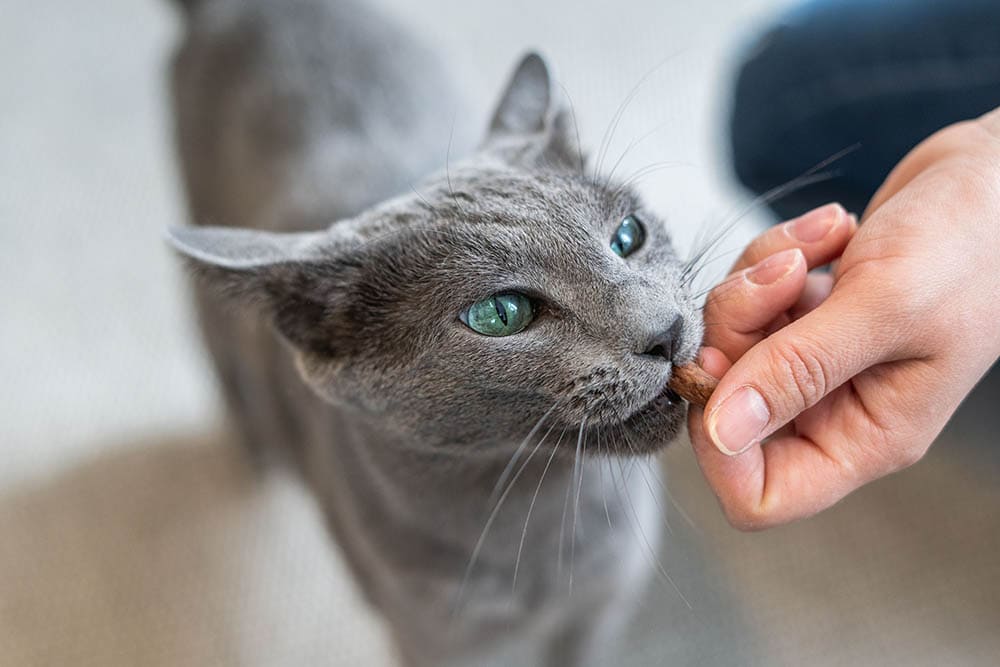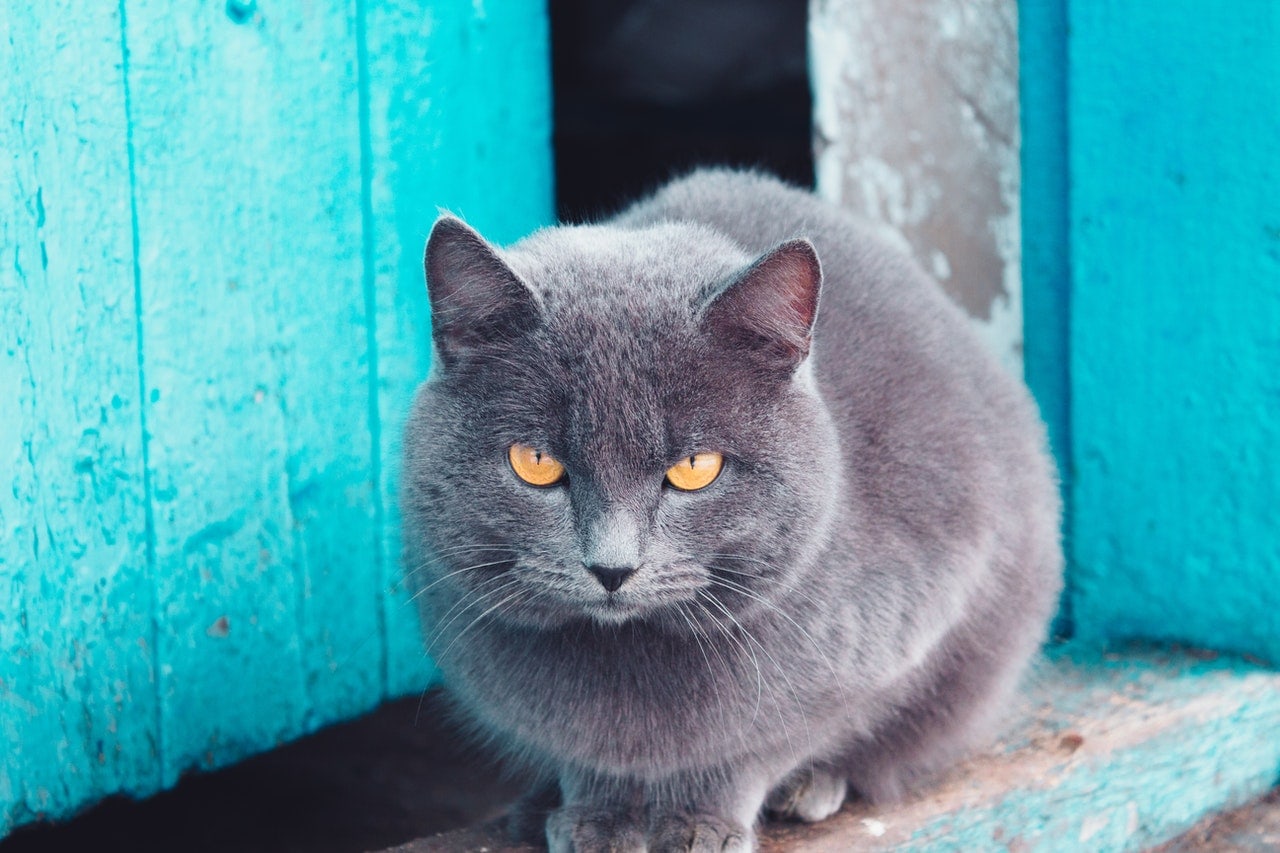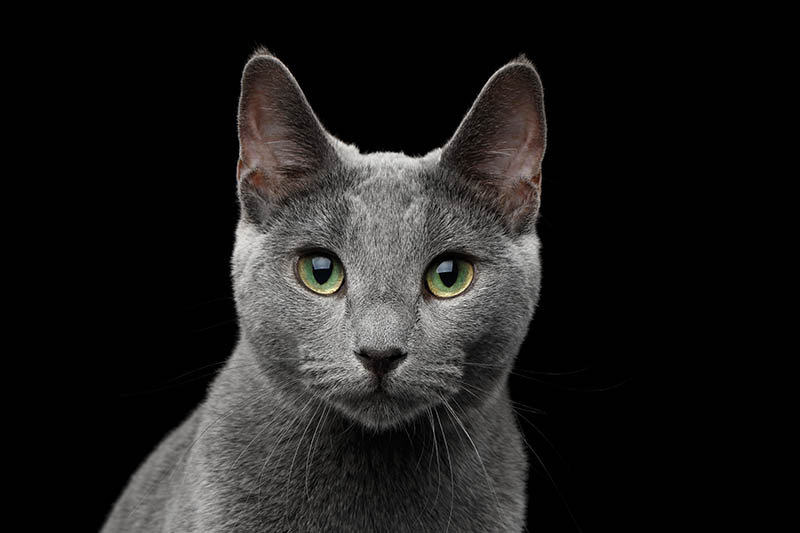
Russian Blues are beautiful, mysterious cats with an instantly recognizable shade to their coats (hence their name). However, the eyes of the cat are even more captivating, as they are always a vibrant green.
In the TICA (The International Cat Association) and the CFA (Cat Fanciers Association) breed standards, the only eye color that can be registered as true to the breed is a vivid green.
But confusingly, some young Russian Blues don’t have green eyes, even though they are 100% purebred. This is because all kittens, regardless of the breed, are born with blue eyes, and in Russian Blues, the color changes to yellow before transitioning to their final emerald shade.
For this reason, TICA adds a section referencing this change in their breed standard.
How Common Are Russian Blue Cats?
Russian Blue cats have gained popularity in recent years, with the breed rising from relative obscurity to a common household pet in the US and UK since the 1900s.
They are a naturally occurring breed that originated in the Arkhangelsk port in Russia (which is why they’re sometimes called Archangel Blues). While many cats have a blue coat, special conditions must be met to classify a cat as a true Russian Blue: one of which is their blue coat with silver tips and bright green eyes.

At What Age Does a Russian Blue Cat’s Eyes Turn Green?
At around four months old, a Russian Blue kitten’s eyes will begin to turn green from yellow. This process starts with a green ring forming outside the iris and slowly moving in until the entire iris is a bright green.
This change coincides with puberty and maturity, which begins at around 4 months for most cats.
Why Does a Russian Blue’s Eyes Change Color?
Cat’s eyes change color due to changes in the amount of melanin in their eyes.
When a kitten’s eyes open, they look blue due to refracted light bouncing off the retina, which shows through because of the lack of pigment in the eye.
When the kitten is around 4 months old, the melanocytes (melanin-producing cells) in the eyes will be fully mature. This is when they begin producing the melanin that makes up the kitten’s adult eye color and why the change of color isn’t sudden but gradual.

What Is the Rarest Eye Color in Cats?
Cats can have various eye colors, including:
However, the rarest eye color found in cats is dichromatic. Dichromatic (or dichroic) means that there are two colors in each eye, usually one around the outer edge of the iris and one around the pupil. This is an exceedingly rare color, but white cats are likelier to have dichromatic eyes.
Another more common (but still pretty uncommon) eye color cats can have is heterochromatic (odd-eyes). This is when a cat has one eye a different color than the other. For example, some cats have one blue eye and one green eye.
Are Green Eyes Rare in Cats?
Green eyes in cats are common but not the most common color. Yellow-eyed cats take the top spot for the most common eye color, but that doesn’t make them any less beautiful.
There are several types of green eyes on cats; some are a brilliant emerald, and others are a murky, almost hazel color (and all shades of green in between).
Both pure breeds and cross breeds have green eyes, and the green-eyed cats that are part of the breed standard include:

How Can You Tell if a Kitten Will Have Green Eyes?
If a kitten’s eyes are a lighter color or less pigmented when they’re very young, it may indicate that they will have green eyes when they mature. However, this doesn’t change the fact that all kittens are born with blue eyes, and it’s not possible to accurately tell which color their eyes will be until they begin to reach maturity.
Final Thoughts
Russian Blue cats are remarkable creatures that have become a common sight in cat lovers’ homes in recent years. Their vivid green eyes have a part to play in their popularity, with all purebred Russian Blue cats having green eyes. The only exception is if the cat is not yet fully mature; a Russian Blue kitten’s eyes will be blue when they first open and will slowly mature to yellow, then to green.
Featured Image Credit: Popova Lena, Shutterstock






